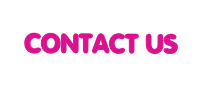Ha…ஜுஜுபி(Jujubi)
For those who are not aware about
the support group of Chennai Breast Centre, it is one of its kind in India. We
meet once a month, discuss and talk about treatment, get clarity about things
related to breast cancer from experts. We also have a whatsApp group where
questions are raised and responded to.
Recently a member posed the
following question in the group, “Can taking Tamoxifen for almost a year cause
anger and mood swings?” If it is getting preachy please proceed to the next
topic!!
So let’s discuss about it here.
Generally if the question had been on anger, I could have pointed out to two
rules:
1.
Anger is the manifestation of my
disappointment because something didn’t work the way I wanted it, the way I
expected it to.
2.
When I am RIGHT I don’t have to get
angry; when I am WRONG I cannot afford to get angry. Period!
But here the question came with
Tamoxifen. If we had read the literature of Tamoxifen for common side effects
of the medicine we would have come across headache, mood swings, hot flashes
etc. Here I would say most of the medicines we generally take do have side
effects, even over the counter medicines. Have you noticed a child who is on
antibiotics behaving angrily like throwing tantrums, throwing things around the
house? Same thing holds good for many medicines. Even the trigger of head
feeling heavy can cause an irritation in our daily routine. The constant
feeling of one taking medicines also can be on huge hindrance to move on.
Identifying the source of mood
swings is a challenge. It could be external or internal factors or a mix of
both.
So how do I tackle?
Right question indeed!!
Have you observed yourself after the episode of anger?
-Hot & blood rushing
-Perspiration
-Shudder
-Complete silence
-Regret
What are we gaining from allowing
the anger? More side effects adding to the existing one?
First and foremost is accepting the fact that
the medicine has to be taken and no option about it otherwise. If this is clear
then the tackling part is easier.
Come on girls, எவ்வளவோ பார்த்துட்டோம் இதையும் ஒரு கை
பார்க்கவேண்டாமா?
Second,
·
Regular exercise – stretches, aerobics,
swimming, dancing, yoga, walking the dog - anything that makes one move around
actively
· Engaging Hands – Washing vessels, spring
cleaning, filing, gardening, creating art/craft – it is said that when the hand
is engaged the mind is not busy thinking of the past or future; it is
completely in the present and that’s Mindfulness
· Group Activities – Reading a novel together,
stepping out with friends, volunteering in a nearby school
·
Avoiding Caffeine, alcohol, sugar/sweets – Anything too much is not good – அளவுக்கு மிஞ்சினால் அமிர்தமும் நஞ்சு
· Diet, hydration and sleep – Small changes to diet and
sleep can go a long way. Hydrating oneself through the day is important too
· Avoid Stressful situations – Feel good about what you
have done on that day, don’t personalize everything, know that the whole world
doesn’t revolve around you but to some you are the world, spend time on self
care
·
Seek support – Talk to your loved ones how you feel
·
Talk Therapist – If mood swings are frequent, a talk
therapist may help










